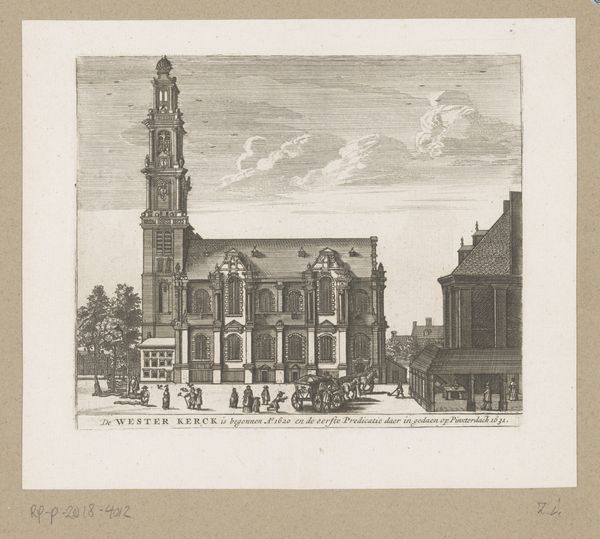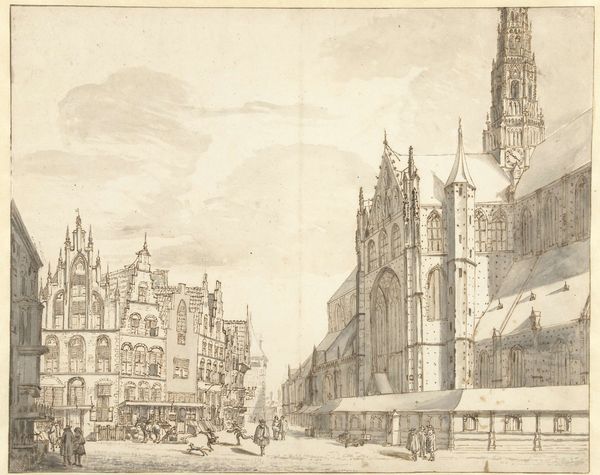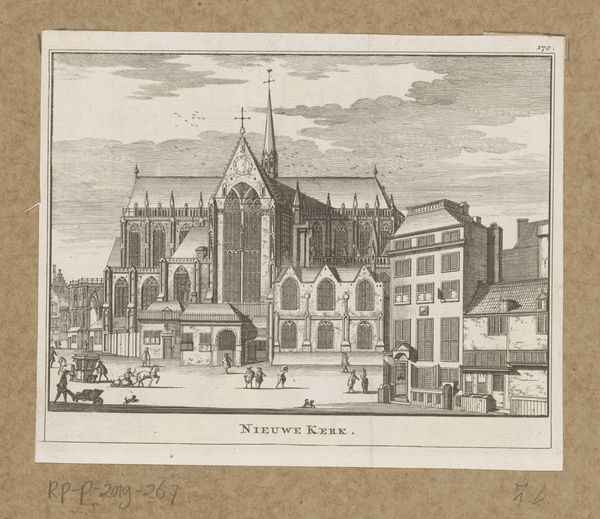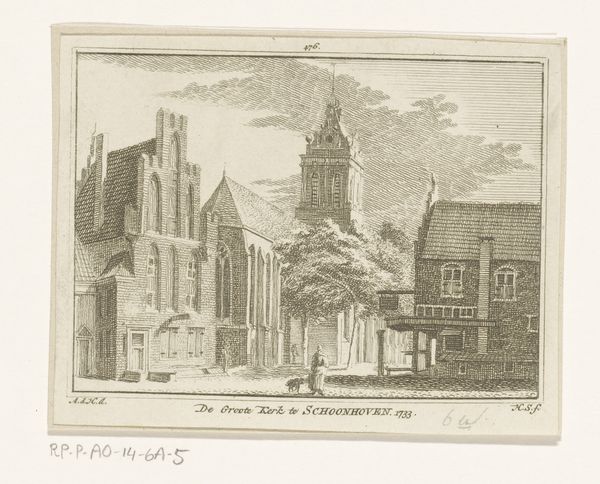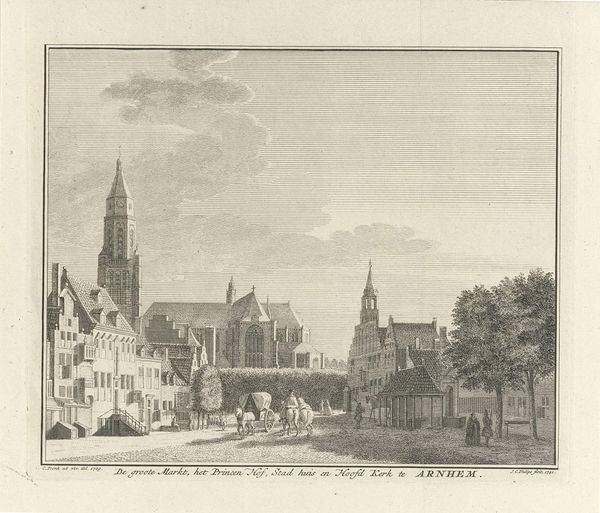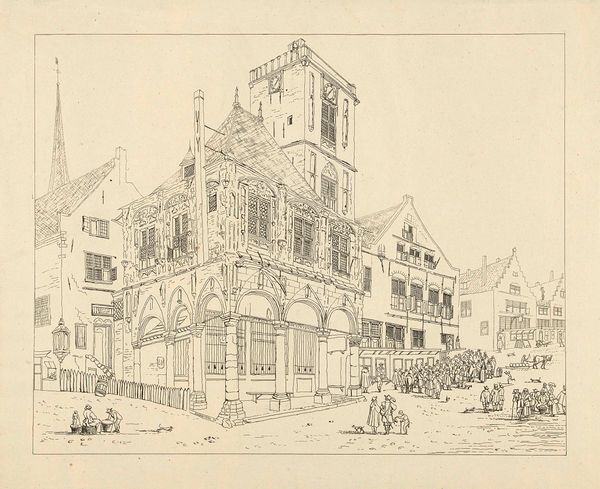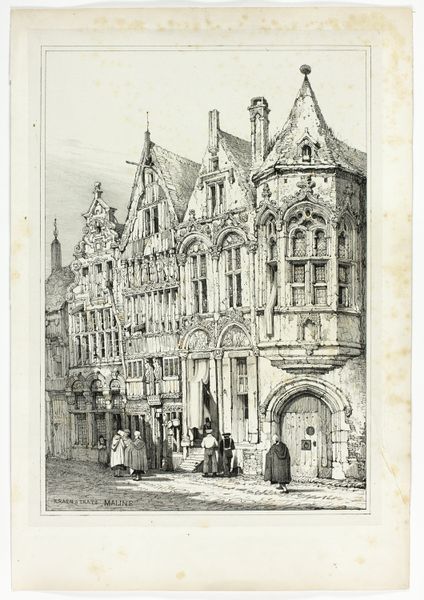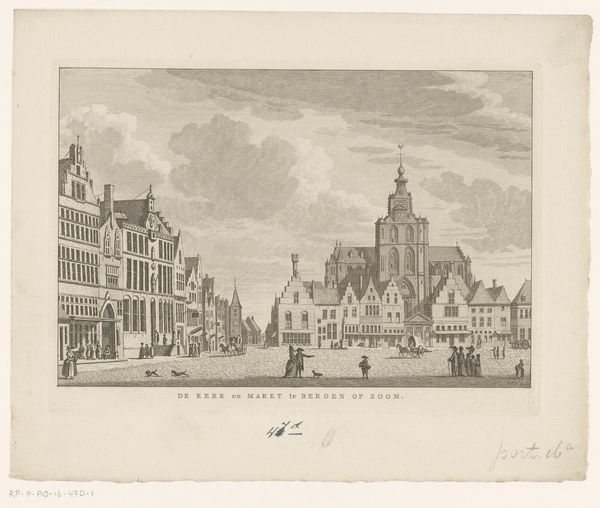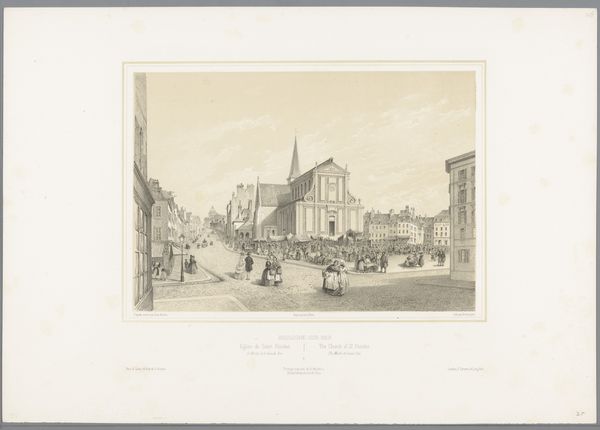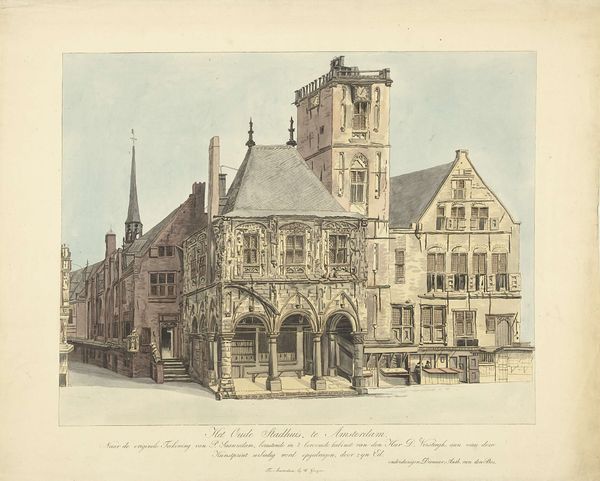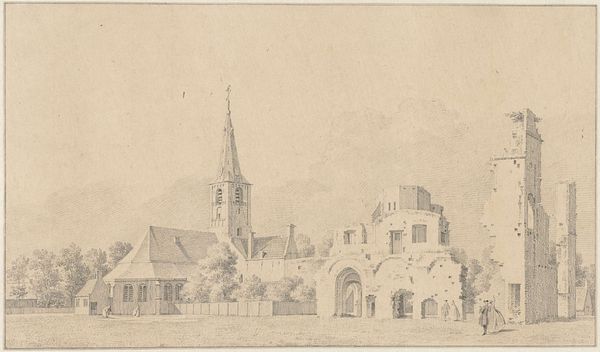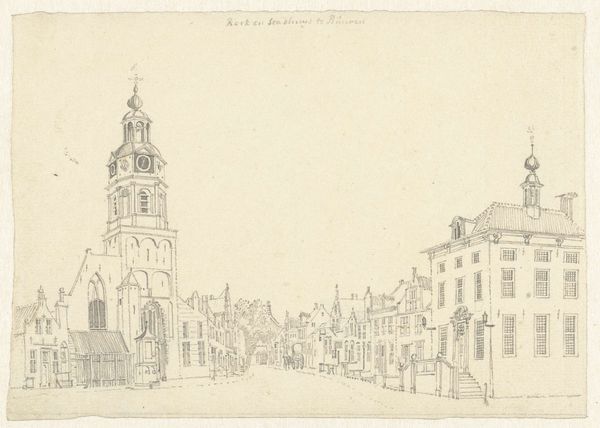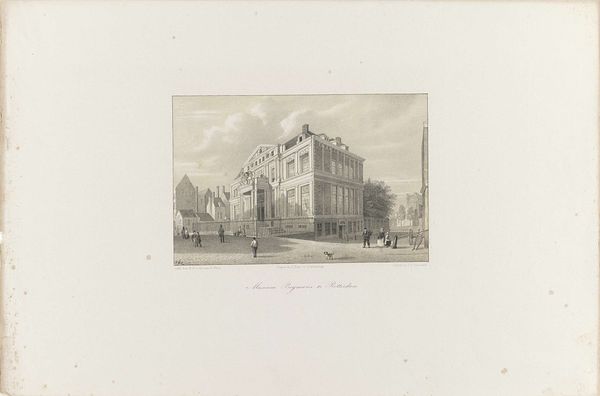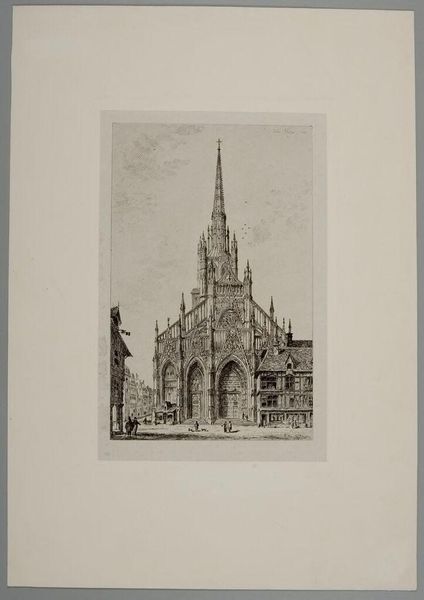
drawing, print, intaglio, engraving, architecture
#
drawing
#
baroque
#
dutch-golden-age
# print
#
intaglio
#
cityscape
#
engraving
#
architecture
Dimensions: height 192 mm, width 239 mm
Copyright: Rijks Museum: Open Domain
Editor: This is "Het stadhuis te Haarlem," or "Haarlem City Hall," an engraving done in 1748 by G. van der Schoor. It depicts the town square and surrounding architecture. The detail is amazing, but there's also something unsettling about the stillness. What story do you see in this image? Curator: The stillness, as you call it, speaks volumes, doesn't it? This cityscape isn't just about architectural representation. Consider the Dutch Golden Age: a period of immense economic and cultural flourishing built, in part, on colonial exploitation. How do we reconcile the beauty and precision of this engraving with the socio-political realities that underpinned its creation? Editor: So, it’s about looking beyond the pretty picture? Considering what the creation of wealth and the depiction of civic pride might have obscured? Curator: Exactly. And who is missing from this picture? Where are the voices of the colonized, the enslaved, the marginalized? The "stillness" you observe is, perhaps, the silence of those excluded from the narrative of power embodied by this city hall. We might consider the power dynamics inherent in the artist's gaze and who benefits from this specific perspective. Do you think that’s fair? Editor: That's a lot to think about, I hadn't considered it from that perspective. I was mainly drawn to the composition and precision of the lines. Curator: The artistry is undeniable. But art, even seemingly straightforward architectural studies, never exists in a vacuum. By exploring its context, we uncover its complicities and its silences, allowing us to have a more complete dialogue with the work. Editor: It makes me want to research more about Haarlem's role during that period and who was included in this “golden age.” Thanks! Curator: My pleasure. It's in those historical nuances and absences that we often find the most compelling stories and challenges to our understanding.
Comments
No comments
Be the first to comment and join the conversation on the ultimate creative platform.
